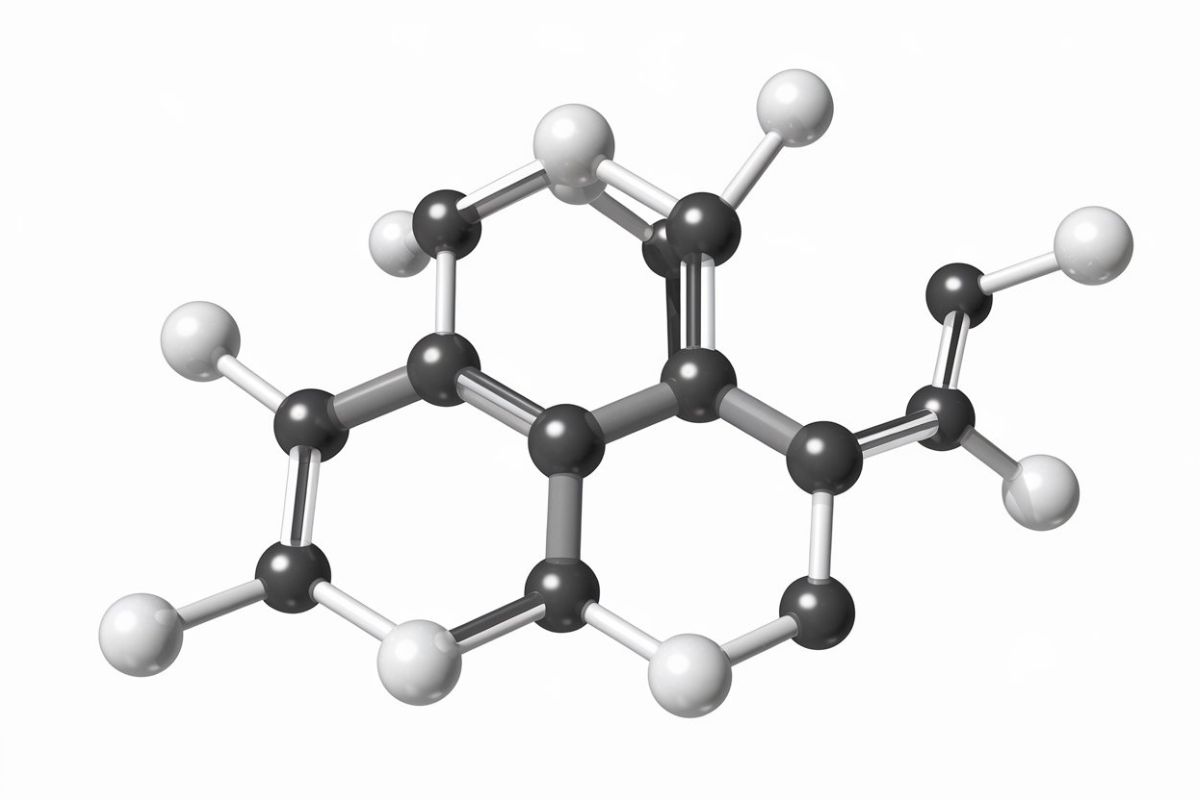
n-Nonatetracontane might sound like a mouthful, but it's a fascinating compound with some intriguing properties. This hydrocarbon, part of the alkane family, consists of 49 carbon atoms and 100 hydrogen atoms. What makes n-Nonatetracontane unique? It's a long-chain molecule, often found in waxes and paraffin. Its structure gives it a high melting point, making it useful in various industrial applications. From being a component in lubricants to playing a role in organic synthesis, n-Nonatetracontane is more than just a chemical formula. Let's dive into 15 captivating facts about this compound that highlight its significance and versatility.
What is n-Nonatetracontane?
n-Nonatetracontane is a long-chain hydrocarbon, specifically an alkane. It belongs to a group of compounds known as paraffins. This molecule is composed of 49 carbon atoms and 100 hydrogen atoms, making it a significant member of the alkane family.
-
Chemical Formula: The chemical formula for n-Nonatetracontane is C49H100. This indicates it has 49 carbon atoms and 100 hydrogen atoms.
-
Molecular Weight: It has a molecular weight of approximately 688.34 g/mol. This makes it one of the heavier alkanes.
-
Structure: n-Nonatetracontane has a linear structure. All carbon atoms are connected in a straight chain without any branches.
Physical Properties of n-Nonatetracontane
Understanding the physical properties of n-Nonatetracontane helps in various applications, from industrial uses to scientific research.
-
Melting Point: The melting point of n-Nonatetracontane is around 85-87°C. This relatively high melting point is due to its long carbon chain.
-
Boiling Point: It has a boiling point of approximately 615°C. Such a high boiling point is typical for long-chain alkanes.
-
Density: The density of n-Nonatetracontane is about 0.8 g/cm³. This is slightly less dense than water.
Uses of n-Nonatetracontane
n-Nonatetracontane has several practical applications due to its unique properties.
-
Lubricants: It is often used in the production of lubricants. Its long carbon chain provides excellent lubrication properties.
-
Waxes: This compound is a component in some waxes. Its high melting point makes it suitable for creating durable wax products.
-
Research: Scientists use n-Nonatetracontane in research to study long-chain hydrocarbons. It serves as a model compound for understanding the behavior of similar molecules.
Environmental Impact of n-Nonatetracontane
Like many hydrocarbons, n-Nonatetracontane has environmental implications that need consideration.
-
Biodegradability: n-Nonatetracontane is not easily biodegradable. Its long carbon chain makes it resistant to microbial breakdown.
-
Pollution: If released into the environment, it can contribute to pollution. Long-chain hydrocarbons can persist in soil and water for extended periods.
-
Toxicity: It is generally considered non-toxic to humans. However, its environmental toxicity can affect aquatic life if it contaminates water sources.
Interesting Facts about n-Nonatetracontane
Here are some intriguing aspects of n-Nonatetracontane that highlight its uniqueness.
-
Crystallization: n-Nonatetracontane can form crystals. Its long, straight chains allow it to pack tightly in a crystalline structure.
-
Synthetic Production: It can be synthetically produced in laboratories. This allows for precise control over its purity and properties.
-
Historical Use: Historically, long-chain alkanes like n-Nonatetracontane were used in early forms of paraffin wax. These waxes were essential for candles and other lighting sources before electricity became widespread.
Final Thoughts on n-Nonatetracontane
n-Nonatetracontane, a fascinating hydrocarbon, plays a crucial role in various scientific fields. Its unique structure, consisting of 49 carbon atoms, makes it a subject of interest for chemists and researchers. Understanding its properties helps in the study of long-chain alkanes and their applications.
This compound's stability and non-reactivity make it useful in creating synthetic materials and lubricants. Its presence in natural sources like crude oil highlights its importance in the energy sector. Despite being a lesser-known hydrocarbon, n-Nonatetracontane's contributions to science and industry are significant.
By exploring these 15 facts, we've uncovered the intriguing aspects of this compound. From its chemical structure to its practical uses, n-Nonatetracontane proves to be more than just a complex name. Keep these facts in mind next time you encounter this remarkable hydrocarbon in your studies or work.
Was this page helpful?
Our commitment to delivering trustworthy and engaging content is at the heart of what we do. Each fact on our site is contributed by real users like you, bringing a wealth of diverse insights and information. To ensure the highest standards of accuracy and reliability, our dedicated editors meticulously review each submission. This process guarantees that the facts we share are not only fascinating but also credible. Trust in our commitment to quality and authenticity as you explore and learn with us.


